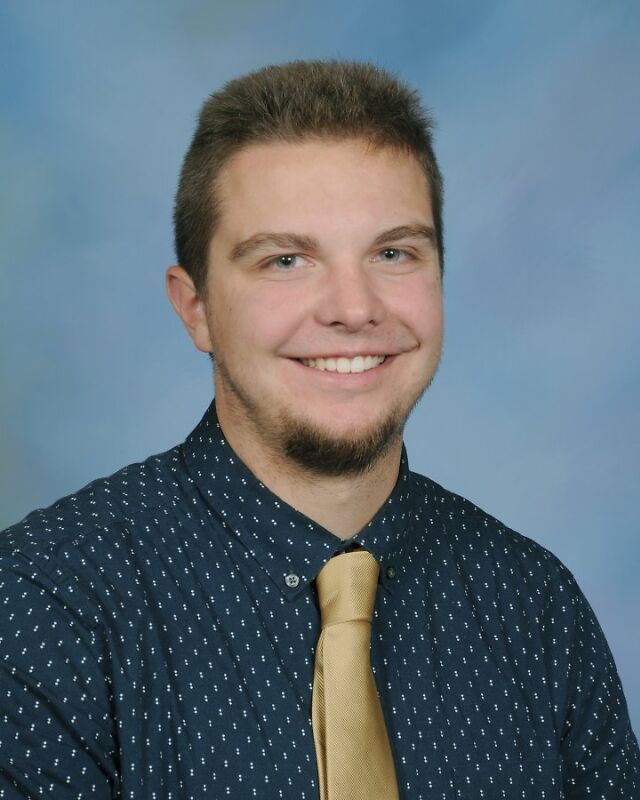Grades K-5
We share the love of Christ while providing a nurturing environment
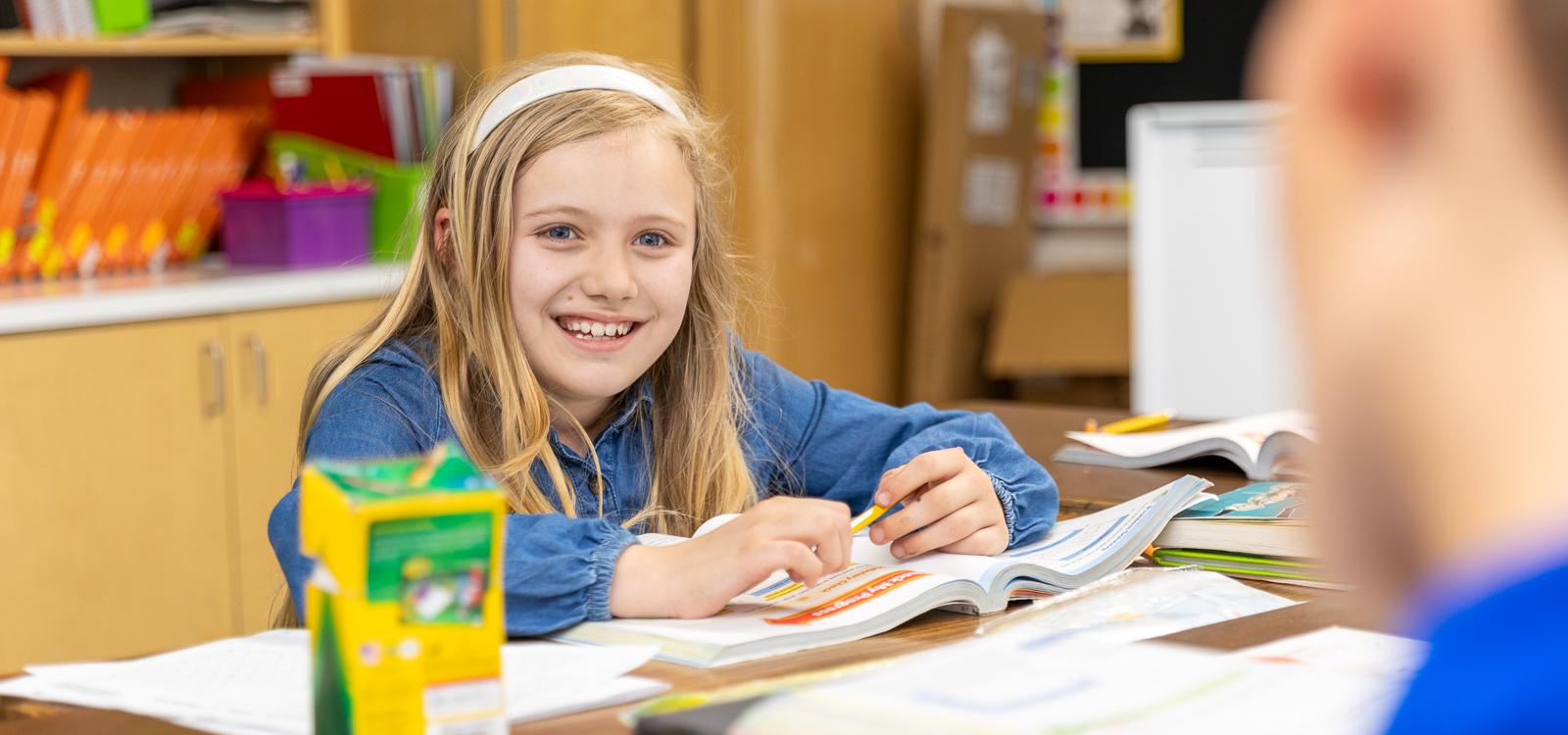
At St. Lorenz School, our educational approach from kindergarten through fourth grade emphasizes holistic development. Rooted in the CPH One in Christ curriculum, we cultivate a strong foundation in faith and moral values. Our curriculum integrates hands-on learning, fostering critical thinking and practical skills across various disciplines. Students engage in activities that promote creativity, physical fitness, and cultural awareness. Through a balanced educational experience that includes technology integration, music appreciation, and community engagement, we prepare students for lifelong learning and personal growth.
Kindergarten Curriculum
RELIGION
The kindergarten religion program is based on the CPH Enduring Faith curriculum. Students worship God by praying and singing. Through Old and New Testament Bible stories, the children hear about God’s promises for His people in the past and about His willingness to act on behalf of His people today. Kindergarteners learn weekly Bible verses that pertain to each week’s lesson. Additional lessons from Second Step help teach skills in focusing, friendship, and problem solving.
MATH
Kindergarten students are taught math concepts using the Big Ideas math curriculum. Additional concepts are taught through calendar time, whole group, and small group activities. The children participate in hands-on activities that involve number concepts, counting skills, patterning, sorting, numeral recognition, estimating, graphing, measuring, and spatial concepts.
SCIENCE
Children in kindergarten learn scientific concepts through real experiences and Nancy Larson curriculum. Our program promotes the development of processes integral to science: observing, communicating, classifying, measuring, comparing, and predicting. Themes in life, earth, and physical science are covered.
SOCIAL STUDIES
Kindergarten students learn about good citizens, America, their families, and the world around them. Specific Social Studies topics are studied in correlation with the curriculum themes.
LANGUAGE ARTS
Kindergartners are provided with experiences with oral and written language in Open Court curriculum.
Oral language experiences are provided throughout the school day. The teacher engages children in conversations about real experiences, current events, and projects. Children are given opportunities to talk with other children and to speak to the whole class. Many listening activities such as following directions and taking turns in a discussion are also part of the daily routine.
Kindergartners are exposed to a language rich environment that guides them into understanding that written words have meaning. Kindergartners become familiar with capital and lowercase letters and how they are written. They learn the sounds of the letter and how to put them together to make words. They are given opportunities to recognize words that have meaning to them such as: their own names, their friends’ names, items labeled in the classroom, words related to the concepts they are learning, and other common words or phrases. Children are exposed to phonics skills that help them become emerging readers. Children are given tools for expressing themselves through drawing, copying, and using their own “invented” spelling. Children also dictate real experiences and stories to the teacher.
ART
Children are encouraged to create their own unique works of art through experiences with colors, lines, shapes, patterns, textures, and designs. They have opportunities to work with a variety of media: pencils, crayons, markers, paints, tissue paper, construction paper, scissors, glue, etc. The focus of art is on the process rather than the product.
PHYSICAL EDUCATION
In kindergarten, the students begin learning general movement concepts such as rhythmic patterns, and body and space awareness, while also learning the general forms of locomotor, non-locomotor, and manipulative skills. They practice these skills by applying them to simple drills and games that also encourage teamwork and cooperation.
GERMAN
Kindergartners are exposed to many German words, songs, and rhymes covering three main topics: 1) ME-The children learn words related to parts of the body, family members, and clothing, 2) MY WORLD – The children are introduced to color words, days of the week, numbers, greetings, and weather, and 3) MY LORD – The children are exposed to prayers and hymns in German.
MUSIC
Kindergartners participate in various musical experiences including group singing, rhythm, movement activities, and listening. Children’s hymns are included daily as the kindergartners grow in their love for Jesus and others.
iPads
Kindergartners are introduced to iPad use. They participate in programs that enhance their learning in reading, science, and math.
Field trips and Special Event
- Family Faith Event
- Transportation Parade
- Church visit for baptism lesson
- McNally/Nimergood Cranes
- Saginaw Children’s Museum
- Weiss Farm to make pretzels
- Saginaw Zoo
First Grade Curriculum
RELIGION
The CPH One in Christ curriculum is used to teach the faith to first graders. Instruction consists of units connected by a common theme which are grounded in God’s Word. Bible stories provide a survey of God’s story of love and salvation for His people as found in the Old and New Testaments and continuing on to touch our lives today. Within the context of each unit, students are taught key concepts of faith such as Law and Gospel, confession and repentance, forgiveness and grace. Students are also introduced to our Lutheran heritage. A joyful and willing attitude toward prayer and worship is encouraged. Through a planned memory program, students learn Scripture verses, hymns, and portions of the Catechism which highlight the theme of each lesson.
ART
A variety of visual art experiences challenges first graders to express themselves using various media including pencil, crayon, chalk, paint, paper, glue, and craft materials. An introduction to artistic styles develops an appreciation for God’s gift of art.
COMPUTERS
First graders use the ipads to support, reinforce, and extend what is learned in other curricular areas. Students learn proper care and use of the ipads.
SOCIAL STUDIES
The ever-expanding world of a first grade student is nurtured through the following topics: People and Traditions, Where We Live, Beginning Economics, Good Citizens, and Skills and Maps.
GERMAN
Activities expand upon basic concepts learned in Kindergarten. Further vocabulary includes but is not limited to the alphabet and spelling, classroom vocabulary recognition, family, animals and pets, numbers to 100, and additional songs and prayers. Vocabulary primarily involves speaking and listening skills acquired through instructional games, activities, and music.
MATH
Our math program offers a balance of experiences leading students from the concrete to the symbolic stages. Through concept introduction, skill building, problem solving, and application, first graders are taught about numbers, addition and subtraction facts, place value through 120, time, geometry, fractions, and measurement. Estimation, mental math, and thinking skills are stressed as students apply math concepts to real life situations.
MUSIC
First graders experience the world of music by listening, singing, performing, moving and playing instruments. They learn the difference between rhythm and beat and read and write simple rhythmic patterns. Using the solfege method (do-re-mi), children match pitches, determine melodic direction and recognize the contour of simple melodies. The children use their voices to praise God by singing for church and chapel.
PHYSICAL EDUCATION
Skill development is important at an early age. In first grade, students learn and reinforce locomotor movements such as skipping, galloping, running, leaping and hopping. They also begin basic forms of non-locomotor movements such as throwing, catching, kicking and stroking. Fitness concepts are also introduced during dance/movement units. As the students are learning these basic concepts, teamwork, fair play, compassion for others and good leadership are focused on.
SCIENCE
The first grade science program uses student journals and hands-on learning experiences to develop vital science skills and understandings as students grow in their appreciation of God’s creation. The program includes units on life stages of human beings, observing trees, exploring sunlight, water and soil, investigating animals and their habitats, discovering what is inside our bodies, and life cycles of insects.
LANGUAGE ARTS
- English
The language components of speaking, listening, reading, and writing are integrated throughout the first grade language arts program. Students plan and write sentences, paragraphs, stories, and letters and have the opportunity to orally share their finished products. As they learn about sentences, students study proper word usage, capitalization, punctuation, and identify and use nouns, verbs, and adjectives. - Handwriting
In the area of written language, the students strive to develop consistent and legible handwriting as they continue to learn proper manuscript techniques. They learn to identify and use the basic strokes and use the headline, midline, and baseline correctly. The four keys to legibility- size, shape, slant, and spacing are practiced and reviewed throughout the handwriting program and also in students daily work as they write numerals, letters, words, sentences, and paragraphs. - Reading
The first grade reading program covers many skills to move the child through emerging literacy and beginning reading. Instruction emphasizes both word recognition skills and comprehension. Word recognition is taught through a multiple skills approach. Phonics, context, word structure, and word meaning skills are developed together. The students are exposed to various styles of fiction and informational text. Comprehension skills and strategies are taught to enhance their reading for meaning. Skills are also developed through listening and speaking, vocabulary activities, and writing. - Spelling
First grade spelling is designed to help students spell any word, not just words on their spelling lists. Spelling lessons are based on concept lists or sound patterns. Lists reinforce language arts instruction so that students make use of the same patterns they learn in reading.
FIELD TRIPS AND SPECIAL EVENTS:
- Temple Theatre Movie
- Leamans Orchard
- Family Faith Event
- Krafft Farm
- Library
- Field Day
Second Grade Curriculum
RELIGION
The religion program is based on the CPH Enduring Faith curriculum. Students are nurtured in their understanding and living of the Christian faith as they are taught a sequential selection of Old and New Testament Bible stories. Within this context they learn key concepts of faith such as Law and Gospel, confession and repentance, forgiveness and grace. Second graders participate in daily worship opportunities which include singing and prayer. They also begin to lead others in worship. Summit materials are used to introduce a Biblical world view. Through a planned memory program, students learn Scripture verses, hymns, and portions of the Catechism.
ART
Second grade students will continue to grow in their appreciation of the visual arts through art explorations that build an awareness of art in God’s world. Using various media including pencil, pastel, charcoal, paint, paper, and sculpting materials, students will express their thoughts with their hands. The elements of art including line, shape, color, value, space, and texture will be discovered. Investigations involving the principles of design including harmony, variety, contrast, balance, movement, and dominance will challenge students as they examine various artistic forms.
COMPUTER
In second grade the children review the proper use of the iPads after which the internet and iPad programs are used to practice and enhance the curriculum in areas of math, science, and language arts. The students will participate in projects and express their learning using technology.
GERMAN
Activities this year will expand upon basic concepts learned in Grade 1. Further vocabulary includes but is not limited to body parts and clothing, the alphabet and spelling, opposites, emotions, review of numbers, and animals. Speaking and listening skills are enhanced as students acquire vocabulary through several new songs, instructional games, and activities. Memorization skills are tested as each student individually learns and recites the Lord’s Prayer.
MATH
The second-grade students extend their understanding of the base-ten system, focusing on the meaning of the places and the relationships among them. They identify the value of the digit in each place of a multi-digit number. Students develop fluency in counting by fives, tens, and hundreds, and multiples of tens and hundreds.
Students in Grade 2 develop fluency with addition and subtraction within 100 (two-digit numbers). They solve problems within 1000. They use manipulatives and learn strategies to help them solve problems. Students develop efficient and generalizable methods for finding sums and differences of whole numbers. They select and apply appropriate methods for solving given problems. Students use web-based Reflex Math program to build fluency of math facts.
Students build their skills of telling time and counting money.
They also work with measurement-using standard units (e.g., inches, centimeters) and standard tools to carry out linear measurement.
Grade 2 students explore the properties and attributes of shapes. They describe and analyze shapes so that they will then be able later to work with more sophisticated geometric concepts.
MUSIC
In second grade the children build on the concepts learned in first grade. They will use their voices and pitched/unpitched instruments for more complex rhythm patterns, ostinati, and melodies. They will be able create, explore, improvise, experience musical concepts through speech, singing, playing, and moving. They will develop their singing voices to praise God by singing in church and chapel services.
PHYSICAL EDUCATION
Skill development is important at any early age. In second grade, students will learn and review locomotor movements such as skipping, galloping, running, leaping and hopping. They will also review basic forms of non-locomotor movements such as throwing, catching, kicking and stroking. Fitness concepts will also be reinforced—dance /movement units. As the students are learning these basic concepts, teamwork, fair play, compassion for others and good leadership is also focused on.
SCIENCE
The second grade science program offers students a chance to use text and experimentation to better understand the world around them. The topics taught at this grade level are: Physics-Forces and Work, Simple Machines, Geology, Matter and Ornithology.
SOCIAL STUDIES
The second grade social studies program helps children understand the workings of their community and the world around them. The units include: Families Past and Present, Geography, Government, Goods and Services, Cultures, and Leaders. Reading and map skills are incorporated throughout the book.
LANGUAGE ARTS
- English
Grammar and Writing teaches sentence structure and parts of speech (noun, verb, adjective, adverb). Writing activities include sentences, paragraphs, stories, description, letter writing and book reports. Other writing opportunities are presented in journal writing. - Handwriting
Manuscript is used for the entire year in grade two. Children practice proper handwriting techniques in their handwriting books and are encouraged to develop neatness and correct letter formation in all their written work. - Reading/Phonics
The second grade reading program spends time reviewing and teaching many phonics and word recognition skills, building on skills learned in first grade. The children are taught to become more fluent readers and to comprehend on a higher level through the teaching of such skills as asking questions, monitoring, making connections and inferences, summarizing and synthesizing, and visualizing using mentor texts and literature at the students’ individual levels. - Spelling
The second grade spelling program consists of grade appropriate word lists which also incorporate a review of words previously taught. Sound patterns presented in first grade are reviewed through these lists. Children are also given the opportunity to practice using the words in context.
Third Grade Curriculum
RELIGION
The religion program is based on the CPH One in Christ curriculum. Lessons are designed to help the children learn key concepts of faith, such as Law and Gospel, confession, repentance, forgiveness, and grace. The children are led to see God’s love in sending Jesus to redeem them. The lessons are based on topical material that coincides with the time of year they are taught. Bible stories highlight the theme of each lesson. Each of the nine units encourages children to live Christian lives empowered by the Holy Spirit.
ART
In third grade, students will experiment with color, design, and the techniques of drawing and printing through the use of paper, paint, pencil, crayon, and chalk to create two-dimensional pieces of art. Students will also enjoy working in three-dimensional art forms through the processes of weaving, discovering textures, and creating crafts. Emphasis will be placed on the process and product of the individual, though experiences in cooperative art will also be provided.
GENERAL MUSIC
Through varied activities of singing, playing, creating, reading, listening and moving, the third grade student will better understand and appreciate the basic elements of music (rhythm, melody, harmony, expression, form, tone color, texture, style). Group singing will involve musical literature from a variety of musical cultures and traditions but will have emphasis on new and old songs of the Christian faith. Students are provided opportunities to play Orff Schulwerk instruments, and will sing as a class in church services during the school year. The text currently used by third grade music students is: Spotlight on Music, MacMillan/McGraw-Hill.
GERMAN
Activities this year will expand upon basic concepts learned in the primary grades. Units of study include reviewing the Lord’s Prayer, identifying the words in the game “Simon Sagt,” classroom vocabulary, and creating a dream house. Speaking, listening, reading, and writing skills are enhanced as students are introduced to the written language and begin to match learned sounds to written words. Art projects, music, and instructional games are used to develop these skills.
MATH
Students in Grade 3 use place value understanding and properties of operations to perform multi-digit arithmetic. Basic addition and subtraction facts are reviewed. Students are introduced to the operations of multiplication and division and achieve fluency with multiplication and division within 100 using strategies based on place value, properties of operations and the relationship between multiplication and division. Students also explore the meaning of fractions using different visual models, including the number line. Third graders explore the concepts of area and perimeter with models and drawings and then use their multiplication and addition knowledge and skills to determine the area and perimeter of polygons. Geometry in 3rd grade focuses on the relationships of shapes.
MEMORY
The third grade memory program includes learning the names of the books of the Bible, the Ten Commandments with the meanings, Luther’s Morning and Evening Prayers, and selected hymns and Bible passages including the Gr. 1-3 St. Lorenz School Legacy Verses.
PHYSICAL EDUCATION
At this grade level, locomotor and non-locomotor skills will be reviewed and reinforced. Non-locomotor skills will be taught at a more mature form than K-2 to prepare for the middle grades. Fitness concepts are reviewed and the teaching of lifetime fitness activities is started—
dance/movement units. Teamwork, fair play, constructive competition and leadership are also focused on.
SCIENCE
Third grade students investigate science questions and problems. Teacher facilitates “hands on” activities and encourages children to use critical thinking, problem solving, and decision making skills as they develop scientific concepts. Students learn to see science as part of technology, society, and personal experiences. They also realize God’s creating hand is present in every facet of science. The third grade program includes the following units: Exploring Our Solar System, Investigating-Elements and Compounds, Observing Physical Changes, Investigating Changes in Our Atmosphere, Exploring the Earth’s Structure, Examining the Structure and Function of Seed Plants, and Investigating Amphibians and Reptiles.
SOCIAL STUDIES
Map skills learned in previous years are reviewed and reinforced. More advanced skills are also developed. Students use these skills throughout the year as they study their world and its communities, specifically Michigan the 2nd half of the year.
The program builds and expands the basic concepts of geography, culture, economics, and government. The children learn about the above concepts in the U.S., Canada, Mexico, and Caribbean Islands. The children learn how the national governments, state, and local work and make decisions that affect their lives.
The eight strands of Social Studies: Economics, Citizenship, Culture, Geography, History, Social Studies Skills, Government, and Science, Technology, and Society are interwoven throughout the chapters. Michigan History will be introduced in the 2nd half of the year.
KEYBOARDING
A primary emphasis in third grade is the introduction of keyboarding skills. With assistance of the Typing Club program, customized lessons teach and monitor the students typing progress.
LANGUAGE ARTS
- English
With our focus on language as a necessary communication tool, third grade students will be focusing on the grammar skills of sentence structure, nouns, pronouns, verbs, adjectives, adverbs, punctuation, and capitalization. Instruction on these basic skills is designed to expand the students’ ability to write. Processed writing will be guided by the use of traits that can be identified, described, and evaluated by the student. Students will learn to write for specific purposes and in specific styles that include poetry, narratives, descriptions, informational paragraphs, imaginative writing, persuasion, comparative articles, and book reports. Emphasis is placed on the student’s progress as developing authors. Many assignments are produced through Google Classroom. - Penmanship
In third grade students begin learning cursive writing. The children learn to identify the basic strokes used most often in cursive writing. All of the lower case and upper case letters are introduced and practiced. Proper manuscript techniques are also periodically reviewed during the year. The 4 keys of legibility: shape, size, slant, and spacing are emphasized. - Reading
The children in third grade are introduced to many new reading skills and strategies. They learn how to summarize stories, give the main idea of a selection, and give supporting details. They also learn to analyze stories to determine setting, main characters, problem, and steps leading to resolution and conclusion of the story. They learn study skills including using dictionaries, encyclopedias, glossaries, and indexes. They also learn comprehension skills and word attack skills.
The children partake in many exciting experiences through literature. The children will choose “just right” books in a multitude of genres such as historical fiction, realistic fiction, fantasy, poetry, plays, non-fiction, biographical, informational, science-fiction, fairy tale, folk tale to name a few. They are given many opportunities to read for pleasure and for information purposes. Accelerated reader is built into our program with quarterly goals set for the students. - Spelling
The third grade student will study the spelling of words directly and indirectly. There will be a list of words to learn each week which will follow a pattern or rule of spelling. That pattern or rule will then be noted as it appears in other words. Spelling will be guided in all writings of the student.
Fourth Grade Curriculum
RELIGION
The religion program is centered in Christ so that fourth grade students have the opportunity to grow their faith and life with God. The lessons are based on sequential Bible stories beginning with creation and studies of the life of Jesus through the early Christian church. Key concepts of faith such as Law, Gospel, confession, repentance, forgiveness, and grace are taught within the context of the stories. Each child experiences daily worship, prayer, and study of the Bible. The children also participate in a planned memory program which includes key Bible passages, portions of the Catechism,
and selected hymns.
ART
Fourth grade students are encouraged to reflect the glory of the Master Designer through an exploration of the elements of line, shape, texture, value, color, and space. Visual art experiences include drawing, painting, printing, weaving, and forming using various media to express the design principles. Creative discovery and art appreciation will be enhanced through the study of artists and art history.
COMPUTERS
The fourth grade student continues in the touch typing method initiated the previous year. The level introduces the student to all alphabet keys and emphasizes accuracy. Basic word processing skills will be introduced to aid in the writing process. Internet research skills will be explained and utilized in the study of science, social studies, and reading class.
GENERAL MUSIC
Through varied activities, the fourth grade student studies the basic elements of music.
Group singing involves musical literature from a variety of cultures and traditions with emphasis on songs of the Christian faith. Students learn to play the recorder and have opportunities to sing as a class in church services during the school year.
GERMAN
Activities this year expand upon concepts learned in previous grades. New units of study include map-reading skills and European geography, mathematics, and expressing time. Speaking, listening, reading, and writing skills are enhanced as students participate in conversational exchanges, music, letter-writing, and instructional games. Aspects of the culture are also learned through correspondence.
MATH
In the fourth grade, students review and further advance the concepts of place value, addition and subtraction, and measurement. The program challenges students in the areas of collecting and organizing data, geometry, and fractions. Emphasis is placed on building skills in multiplication and division. Throughout the lessons, students learn strategies and increase skills in problem solving.
PHYSICAL EDUCATION
At this grade level, locomotor and non-locomotor skills are reviewed and reinforced. Non-locomotor skills are taught at a more mature form to prepare for the middle grades. Fitness concepts are reviewed and the teaching of lifetime fitness activities is started-dance/ movement units. Teamwork, fair play, constructive competition and leadership are emphasized.
SCIENCE
The fourth grade program explores energy (kinetic, potential, sound, heat, light, and radiant energy). We build a variety of electrical series and parallel circuits using Snap Circuits. Our study of life science introduces cells and cell structures, botany, characteristics of vertebrate and invertebrate animals, and how they interact in an ecosystem. We discuss how God has made each organism unique with adaptations that help them thrive in their environment.
SOCIAL STUDIES
In fourth grade, the student studies the geographic regions of the United States. Skills needed for interpretation of information are practiced including content reading, thinking skills, study skills, and map skills. A focus is placed on Michigan and its history, building appreciation for the student’s state. Citizenship is encouraged through discussion of current issues and Michigan government.
LANGUAGE ARTS
- Language Arts
Through literature, composition, listening, and speaking the fourth grade students study the English language. Students integrate their study of grammar skills with process writing. Writing experiences are guided by the use of specific features, or traits that can be identified, described, and evaluated by the student. Experiences include review of the basic paragraph, descriptive, expository, narrative, and persuasive writing. - Handwriting
In fourth grade, students work toward improving the legibility of their cursive writing. Review of upper case, lower case, and letter connections are practiced, applied, and evaluated. The lessons are arranged in sequence according to similar strokes. Students use cursive writing in their daily work. - Reading
The fourth grade reading program exposes students to a variety of literary genres. Emphasis is on improving fluency and comprehension through word knowledge, vocabulary, reading strategies, and reading skills. Each unit introduces students to an essential question which is answered through three reading selections. In addition, a class novel is read each quarter. The novels include The Lemonade War, Charloette’s Web, Shiloh, and Frindle. - Spelling
Skill in spelling is developed by identifying relationships between letters and sounds presented in systematic spelling instruction. The words are practiced in context and manipulated to discern the English spelling pattern.
Fifth Grade Curriculum
RELIGION
Concordia Publishing One in Christ and the Bible is the foundation for instruction. God’s Word is studied through the Lord’s Prayer, the Commandments, the Sacraments, the Apostle’s Creed, and the life of Christ through His resurrection. Each lesson connects to a Bible story relating true discipleship, God’s blessings to the Church, and worship.
ART
Fifth grade students are encouraged to express their creativity by the examination and application of the elements of art: line, shape, form, texture, value, color, and space. Along with the principles of art which are balance, movement, variety, contrast, pattern unity and emphasis. Students’ appreciation and inspiration are enhanced by an art history review of known artists. Students will be experimenting and creating with a variety of mediums including paint, colored pencils & markers, oil pastels, printmaking, collage, and textiles.
BAND
Beginning Band students are taught the fundamental skills necessary to perform on a wind or percussion instrument. Students learn instrument care, playing posture, embouchure formation, tone production, note recognition, pitch perception, and proper home practice habits. The general emphasis at this level is on the enjoyment of playing.
CHOIR
Fifth grade students will meet twice a week as a classroom choir. The students will develop their singing skills along with reading music, vocabulary, and history. They will perform for church services, chapels, and two school concerts each year. As they participate in these activities, they will grow in their understanding of how music affects their lives daily. At the core of this lays the understanding that music is a fair and glorious gift from God, given to us on earth that we might use it to praise the Maker’s name. Participation as a class choir in leading Sunday worship and school chapel services will provide the opportunity for students to give back to God through the gifts that He has given to them.
COMPUTER
The fifth grade computer class will focus on keyboarding skills and collaborative projects. The students will use Type to Learn to improve typing speed and accuracy. Other programs such as Internet Explorer, Microsoft Word, and Microsoft Power Point will be reviewed and used to enhance the study of other subjects. To prepare the students for 6th grade, the fifth grade computer class will use a variety of technology (desktop, laptop, and iPad) throughout the year. Google Documents will also be taught as part of a Social Studies class project.
GERMAN
Activities and lessons this year will expand upon units learned in previous grades. Specific units of study will include: the German school system, careers, question vocabulary, fruits and vegetables, animals, and words that are similar in German and English. Specific conversational skills will be developed through speaking, listening, reading, translating, and writing. Instructional games, texts, poetry, and teacher-created materials will be used to increase fluency and understanding.
MATH
The fifth grade math curriculum is aligned with the National Common Core Standards. The first seven topics include number and operations in base ten. This includes adding, subtracting, multiplying, and dividing. Other topics covered include using fractions in mathematical operations, measurement and data collection, and geometry. The curriculum highlights the importance of computation; however, it also challenges students to solve problems in a variety of ways. Students are expected to not only solve problems, but effectively communicate how they solved them.
PHYSICAL EDUCATION
Locomotor skills and object control can still be developing stage at these grade levels; however, the class is focused on how these skills can be used in various sports and activities. Emphasis is on learning and developing specific skills for specific sports. The concept of team and team sports is used extensively. Introduction to rules of the various sports occurs at these grade levels. Physical fitness continues with building strength and endurance to a higher level and adding to that power. Fitness as a lifelong pursuit is emphasized. A unit on social dance is done to continue reinforcing dance skills. An emphasis is also placed on social and personal skills such as leadership and cooperation, sports etiquette and fair play, dealing with winning and losing, individual and property respect, tact, perseverance, and best effort.
SCIENCE
The fifth grade science curriculum provides opportunities for students to investigate, observe, and draw conclusions about the world around them. Students are encouraged to combine text information with experience gained through hands-on experiments, demonstrations, and exploration activities. Topics include the study of the solar system and universe, matter and its properties, energy and motion, and tools and machines.
SOCIAL STUDIES
Fifth grade Social Studies focuses on United States History. Native American Exploration, Colonization, and Revolutionary War time periods are emphasized. Through this study, students will not only learn history, but citizenship, geography, government, culture, and economics. The workbook is a valuable resource, however, there is a focus on incorporating project-based instruction including computer and artistic projects.
LANGUAGE ARTS
- English
Study is integrated through literature, composition, listening, and speaking experiences. Grammar is taught through differentiated instruction and integrated into the writing process using writing traits as the guide for improvement and evaluation. Narrative, expository, persuasive and research writing are the focus of compositions. - Penmanship
Cursive style writing is emphasized throughout fifth grade. Attention is given to letter sizes, slant, spacing, and smoothness of both lower- and upper-case letters. Manuscript writing is also reviewed. - Reading
Students read varied genres analyzing comprehension strategy and skills relating to an essential question. Close reading instruction prepares the students for responding with text evidence. Academic vocabulary is applied in context. Writing in response to literature is taught and implemented regularly. Independent reading is done daily with reading logs and tracked throughout the year allowing full use of the library to develop a lifelong love of reading. - Spelling
The spelling curriculum uses word lists based on sound patterns. The lists include words which are educationally appropriate and commonly used. Activities built around these lists help the students use prefixes, suffixes, roots, and word relationships to spell new words. Cumulative systematic review and assessment help the students to retain their instruction.
Elementary Faculty
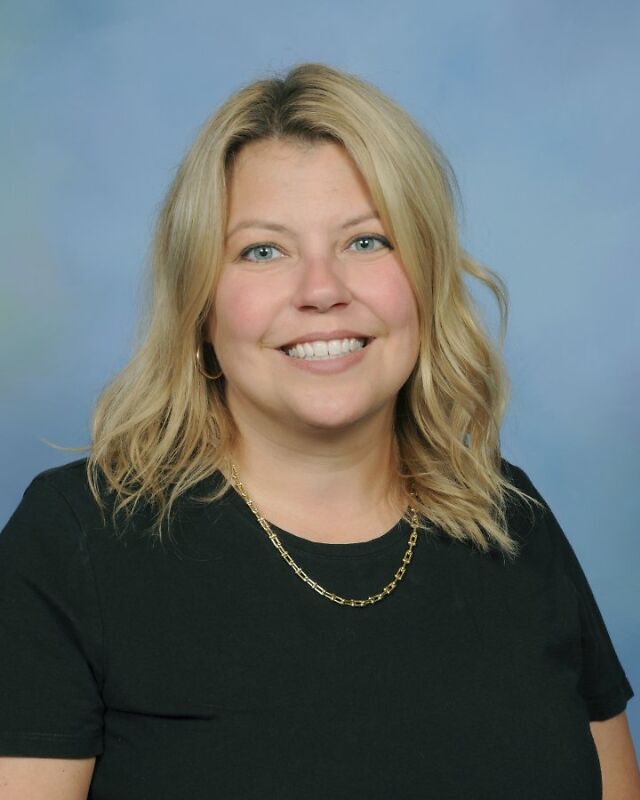
Reagan Bickel
Kindergarten
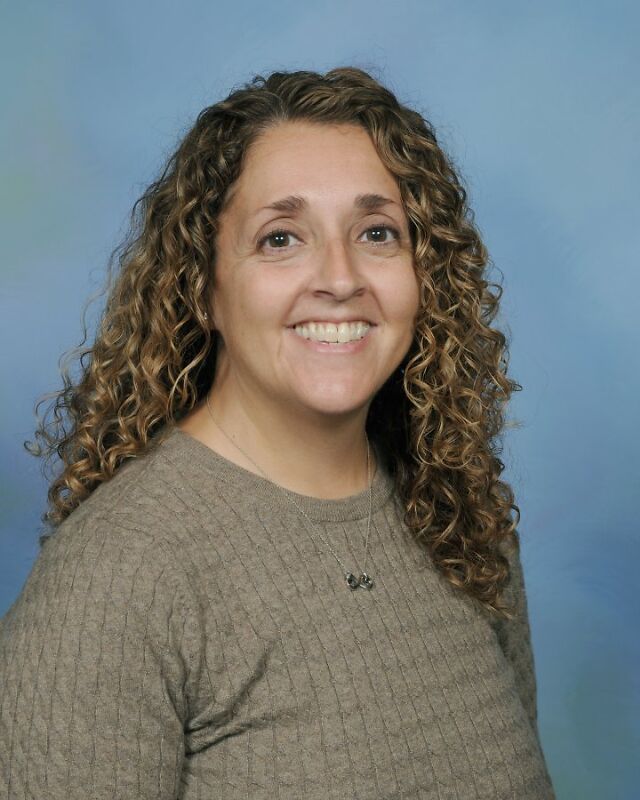
Courtney Cramer
Kindergarten
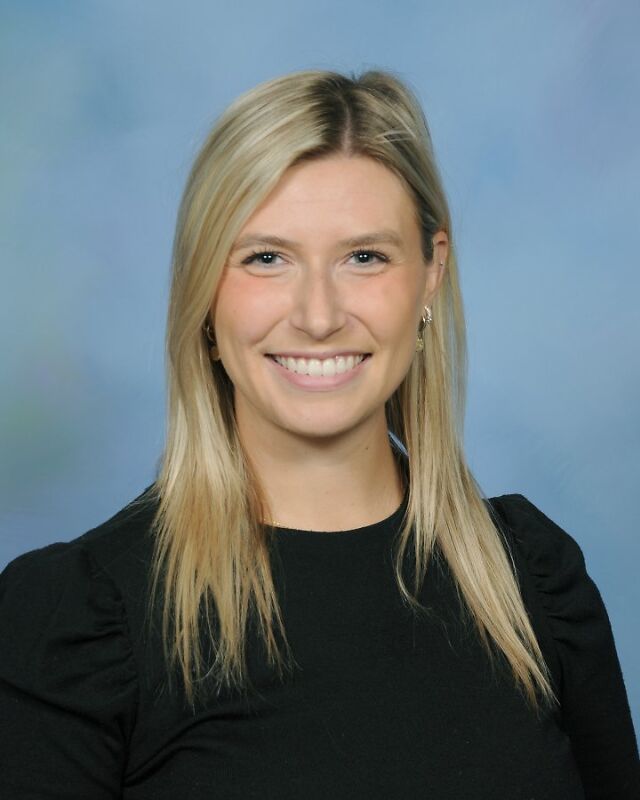
Kendra Keyes
1st Grade
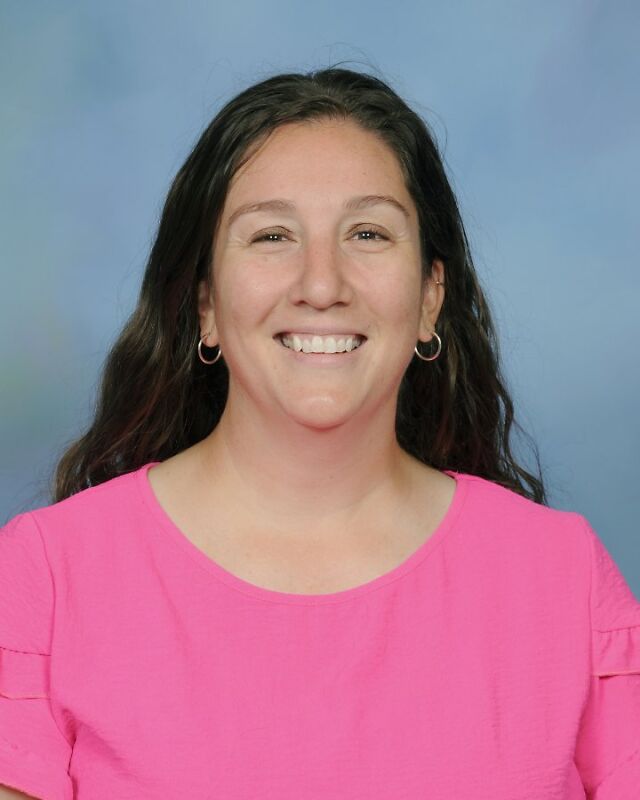
Katie Winningham
1st Grade
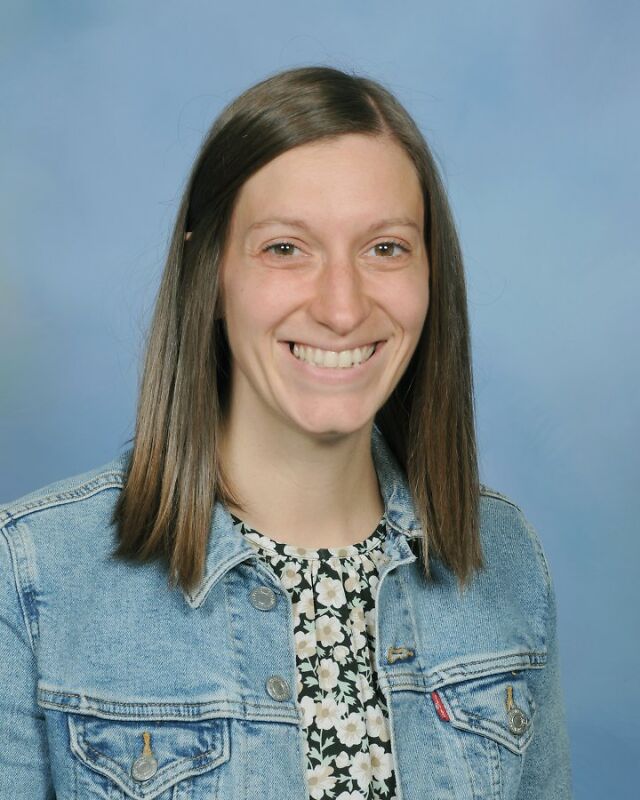
Jill Winterstein
1st Grade
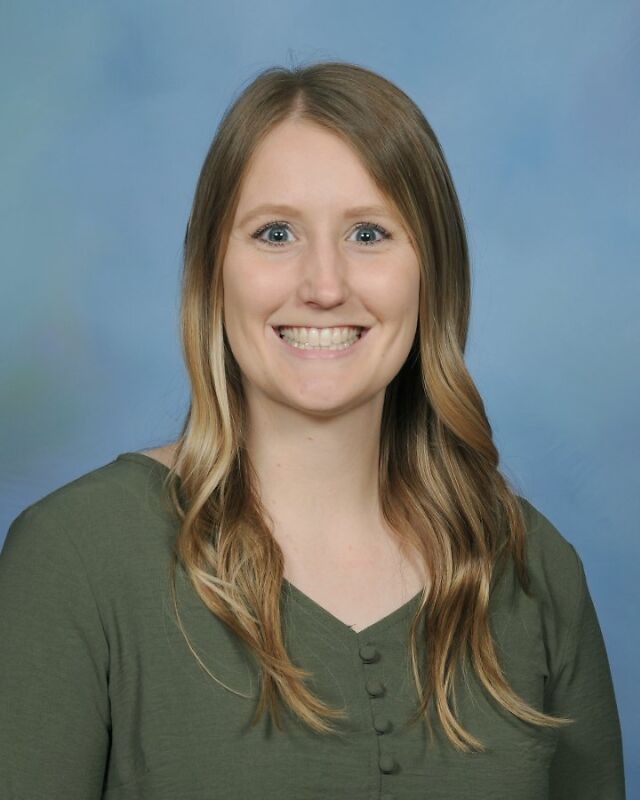
Liz Bartels
2nd Grade
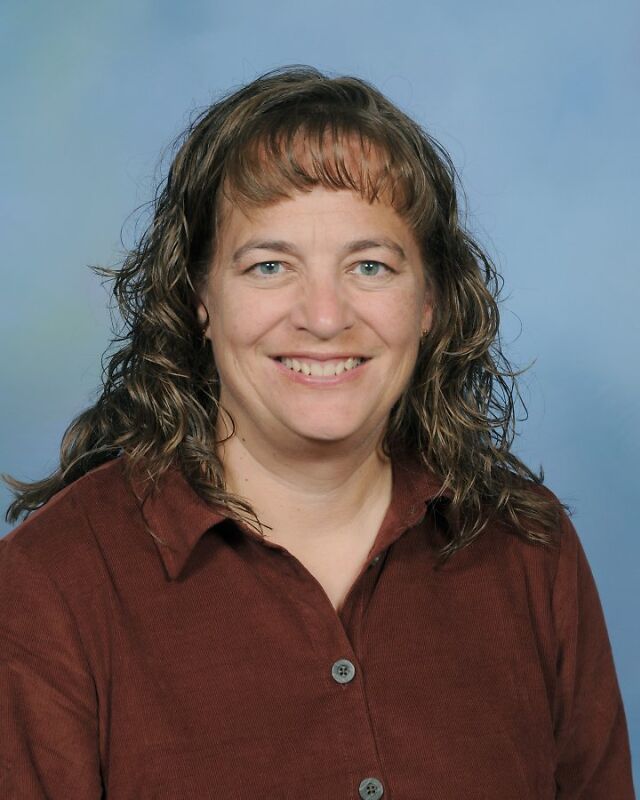
Lisa Laux
2nd Grade
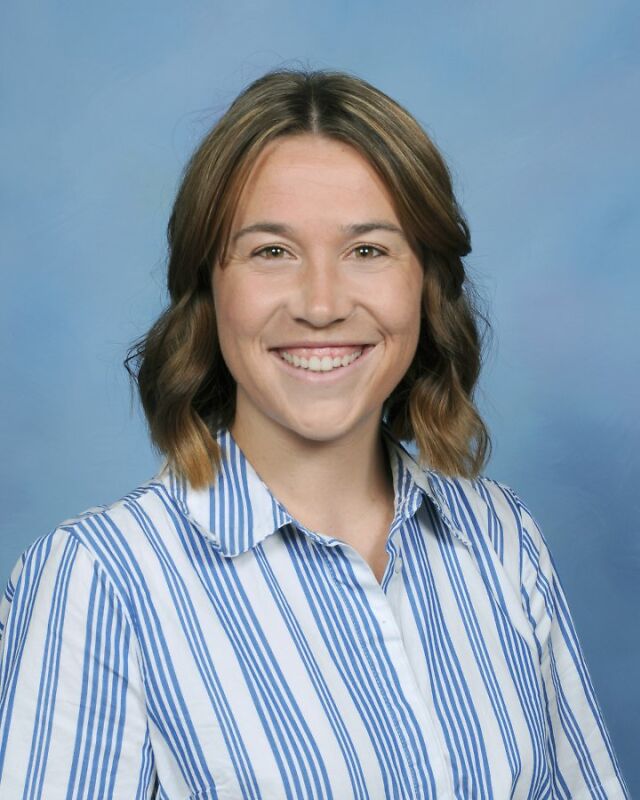
Kelsey Splattstoesser
2nd Grade
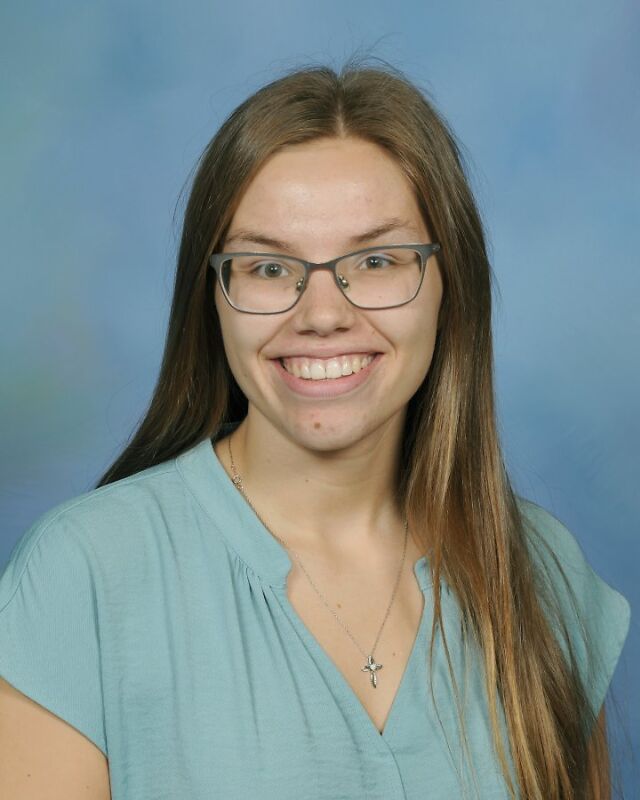
Beth Haubenstricker
3rd Grade
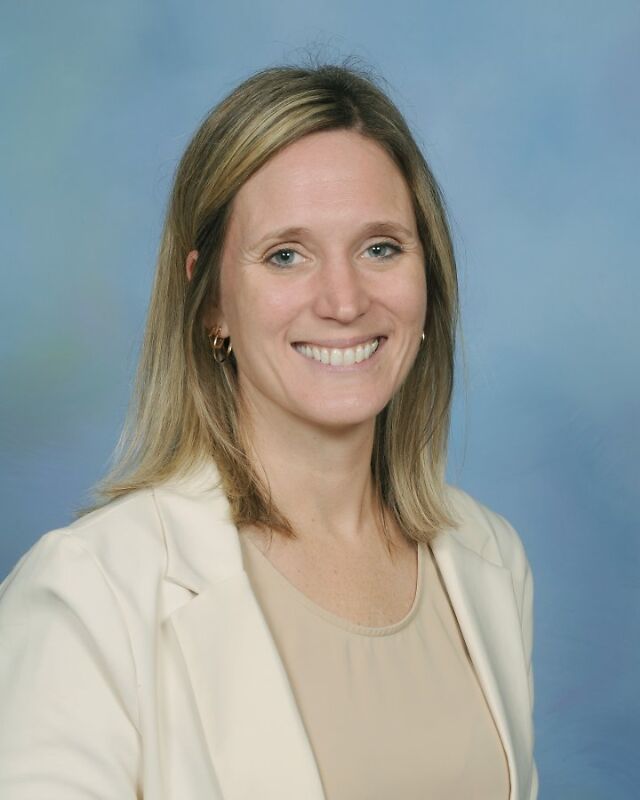
Amy Hays
3rd Grade
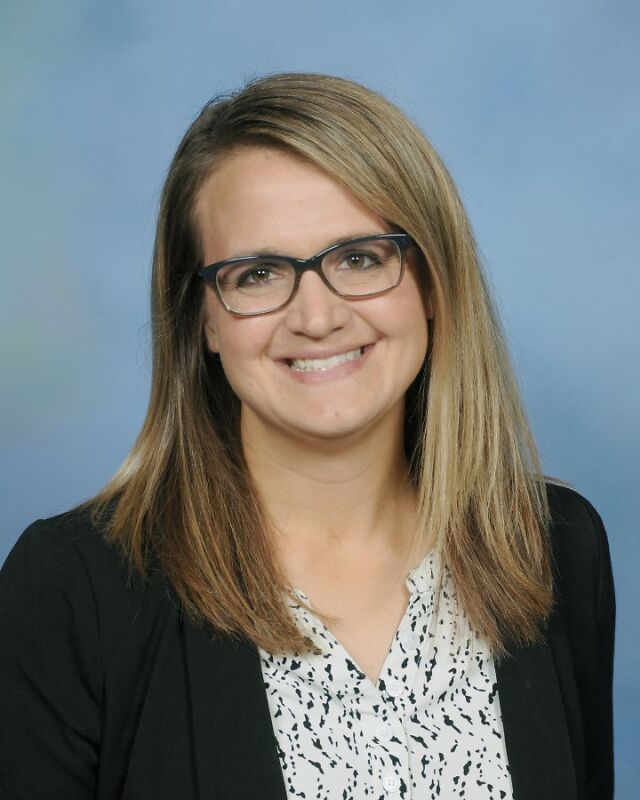
Becky Ball
4th Grade
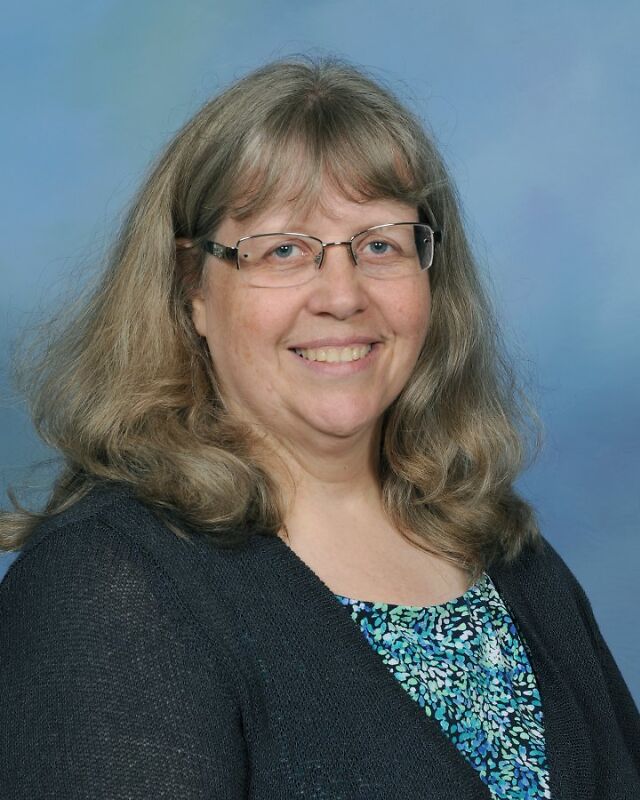
Judy Schwaegerle
4th Grade
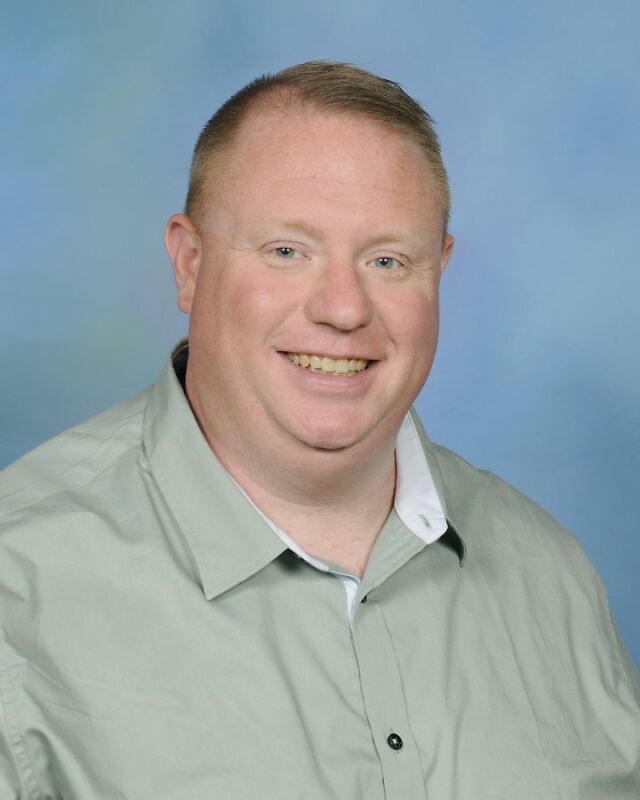
Ian Sharman
4th Grade
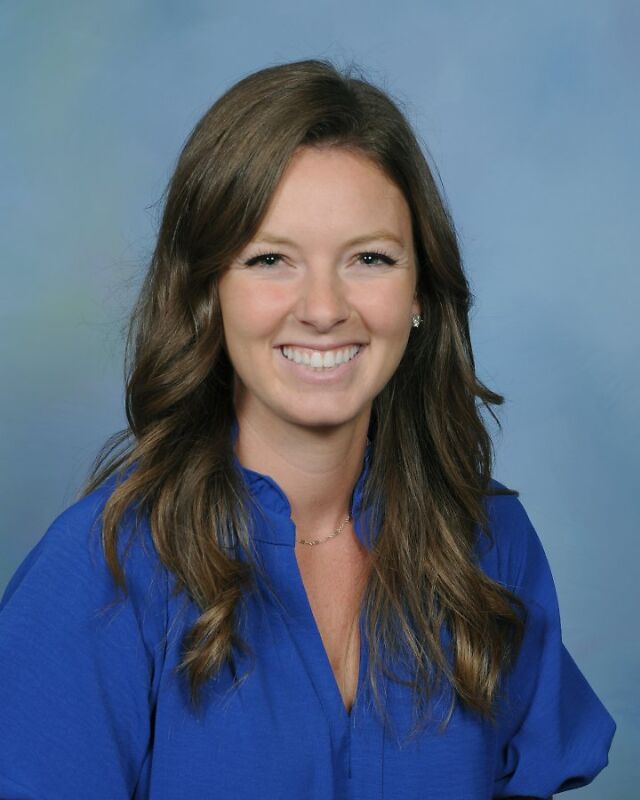
MacKenzie Drinan
5th Grade
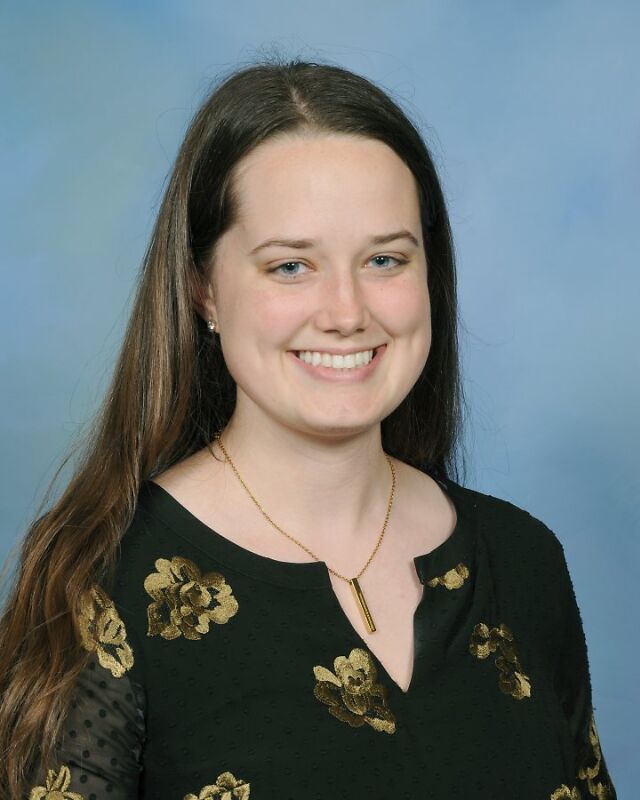
Hope Strieter
5th Grade
